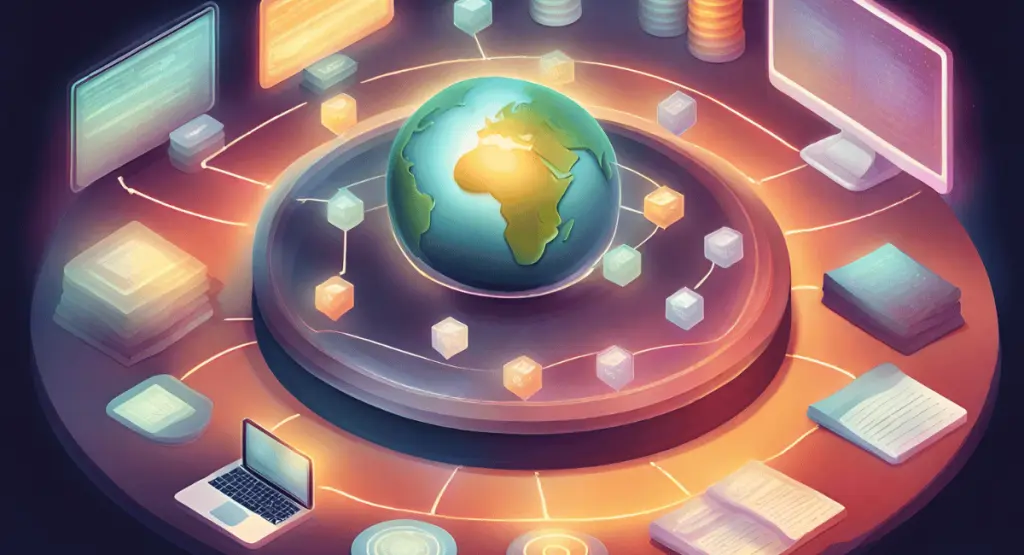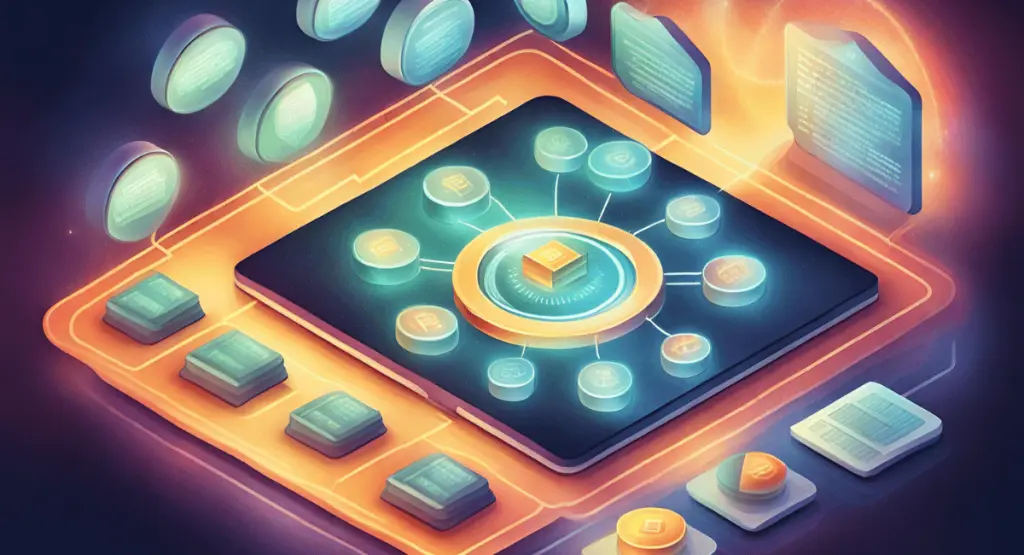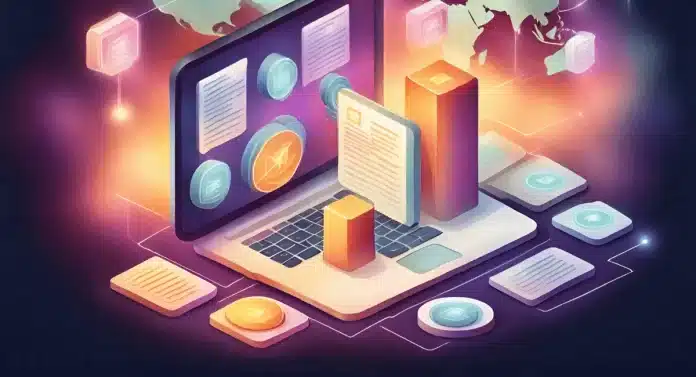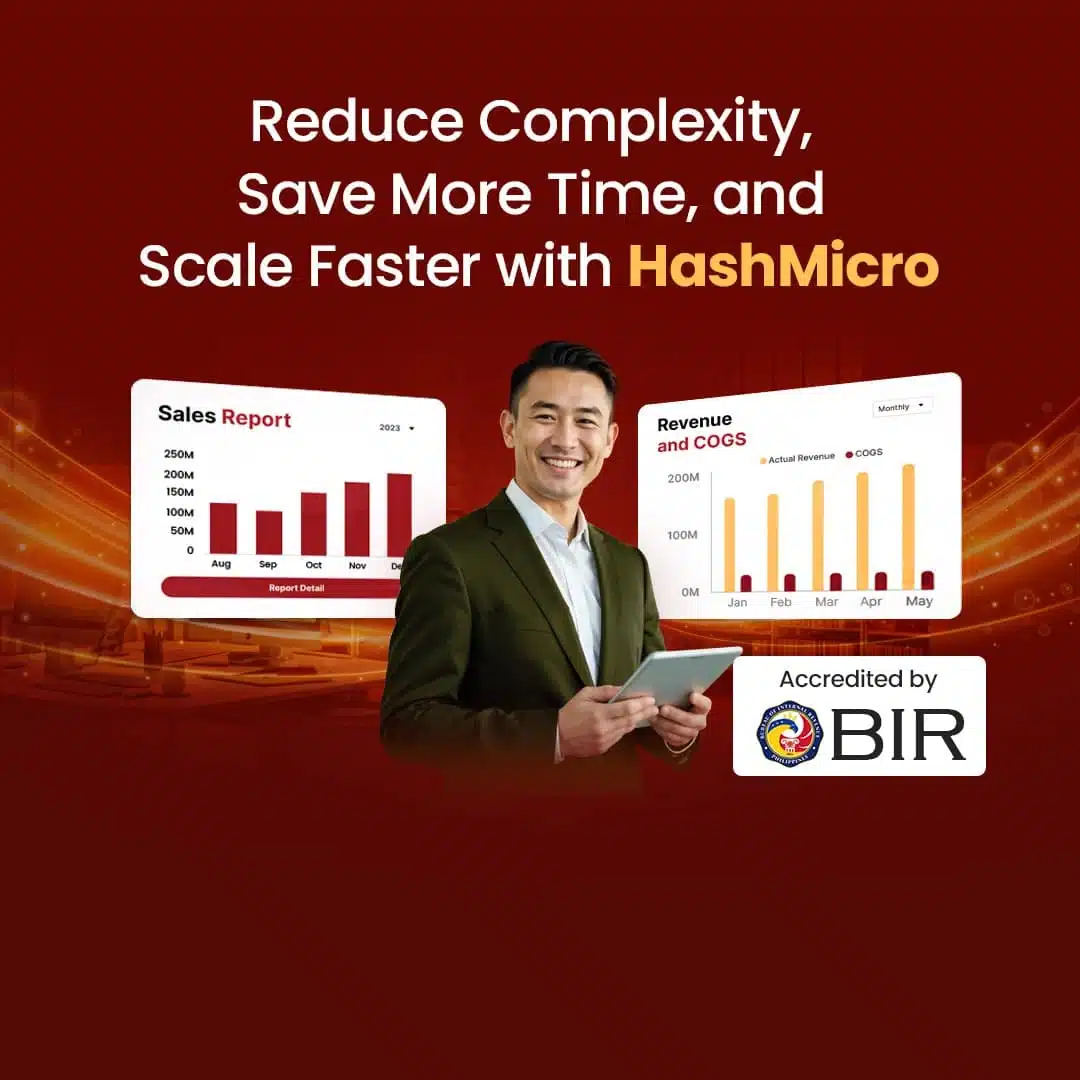We will explore the history and evolution of ERP systems and how it has transformed businesses globally, including the impact it has had on Philippine businesses. So, let’s embark on this journey through time and discover how ERP systems have evolved from their humble beginnings in the 1960s to the sophisticated solutions we use today.
But before we dive into the details, let’s define what is ERP systems ERP stands for Enterprise Resource Planning, and it refers to software systems that connect and integrate various aspects of a business. The main goal of ERP systems is to streamline processes, share accurate information, and improve efficiency across different departments. ERP systems have come a long way since their inception, evolving from basic inventory management systems to complex solutions encompassing finance, HR, supply chain management, etc.
Throughout this series, we will explore the history and evolution of ERP systems, decade by decade, highlighting the key milestones and technological advancements that have shaped them. We will also discuss the current trends in ERP systems, such as cloud-based solutions, AI integration, and IoT connectivity. Additionally, we will examine the impact of ERP systems on Philippine businesses and how they have helped improve operational efficiency and competitiveness.
To provide you with a visual representation of ERP systems, take a look at this image:
So, buckle up and prepare to embark on a journey through time as we explore ERP systems’ fascinating history and evolution. Stay tuned for the upcoming sections, where we will dive deeper into the intricacies of ERP software development and its impact on businesses in the Philippines.
Table of Contents
Definition and initial concept of ERP
Enterprise Resource Planning (ERP) is a software system that integrates and centralizes various business functions and departments. The core concept of ERP is to provide a shared database that supports multiple functions, allowing different departments to access accurate information and streamline processes.
With the best ERP system in Philippines, information flows seamlessly between departments, eliminating the need for redundant data entry and improving data integrity. ERP systems provide a comprehensive view of the organization’s resources, enabling businesses to manage their resources more effectively, improve collaboration, and enhance decision-making.
Typically, ERP systems encompass a wide range of functionalities to support different aspects of the business. These functionalities can include finance and accounting, human resources, supply chain management, customer relationship management, and project management. However, the specific features and modules of an ERP system can vary depending on the industry and the organization’s specific needs.
The goal of an ERP system is to provide a holistic view of the business by centralizing data and processes, enabling better coordination and efficiency. By consolidating information from different departments, ERP systems enable real-time reporting, data analysis, and forecasting, empowering organizations to make informed decisions and respond quickly to market changes.
Furthermore, ERP systems are designed to be customizable, allowing businesses to tailor the software to their unique requirements. Whether it’s adapting to specific industry regulations, integrating with existing software solutions, or personalizing workflows, ERP systems offer flexibility and scalability.
By implementing an ERP system, businesses in the Philippines can streamline their operations, increase productivity, and gain a competitive edge in the market. ERP systems facilitate end-to-end process automation, reduce manual errors, and enhance data accuracy. Moreover, ERP systems enable better collaboration and communication among employees by providing a centralized platform for information sharing and document management.
Historical and Evolution of ERP System: From 1960s inventory management to 2020s AI integration.
The historical development of ERP systems can be traced back to the 1960s when Material Requirements Planning (MRP) systems were introduced. These early systems focused on inventory management and production scheduling. In the 1980s, MRP evolved into Manufacturing Resource Planning (MRP II), which expanded to include additional aspects of the manufacturing process and integrated different departments.
In the 1990s, ERP systems emerged, connecting various business functions and departments through a centralized database. This era saw the integration of finance, HR, and sales into ERP systems. With the advent of the internet in the late 1990s, ERP systems gained real-time data access and e-business capabilities. The 2000s marked the era of ERP II, which offered enhanced integration and flexibility, incorporating CRM and SCM functionalities.
In the 2010s and beyond, ERP systems have embraced cloud computing, AI, and IoT to provide intelligent, predictive, and scalable solutions. These advancements have revolutionized the capabilities of ERP systems, enabling businesses to make better-informed decisions, optimize their operations, and achieve higher levels of efficiency and productivity.
Evolution of ERP Systems: Decade-by-decade changes and technological advancements.

The evolution of ERP systems can be traced through the decades, with significant milestones and technological advancements marking each era. From the 1960s to the present, ERP systems have continuously adapted to meet the changing needs of businesses and leverage emerging technologies.
The 1960s: Revolutionizing Inventory Management and Production Scheduling
In the 1960s, Material Requirements Planning (MRP) systems revolutionized inventory management and production scheduling. These systems allowed businesses to efficiently plan and manage their material needs, optimizing production processes and reducing costs.
The 1980s: Expanding to Include Other Departments
The 1980s brought about the evolution of ERP systems into Manufacturing Resource Planning (MRP II). This expansion included the integration of other departments, such as finance, HR, and sales, into the ERP framework. MRP II provided businesses with more comprehensive and integrated planning capabilities.
The 1990s: Integration of Finance, HR, and Sales
In the 1990s, ERP systems emerged, integrating various business functions, including finance, HR, and sales. This integration allowed for improved coordination between departments, streamlined processes, and better access to unified data for decision-making.
The Late 1990s: Rise of Internet-Based ERP Systems
In the late 1990s, internet-based ERP systems emerged, leveraging the power of the internet to provide real-time data access and enable remote collaboration. This era also witnessed the adoption of Software as a Service (SaaS) models, making ERP systems more accessible and cost-effective for businesses.
The 2000s: Enhanced Integration and Customization
The 2000s marked the era of ERP II systems, which offered enhanced integration and customization capabilities. These systems provided businesses with the flexibility to tailor their ERP solutions to their specific needs, integrating additional functionalities such as customer relationship management (CRM) and supply chain management (SCM).
History and Evolution of ERP in the 2010s: Cloud Computing, AI, and IoT
In the 2010s and beyond, ERP systems embraced cloud computing, artificial intelligence (AI), and the Internet of Things (IoT). Cloud-based ERP solutions provided businesses with scalability, flexibility, and easier accessibility. The integration of AI and IoT enabled intelligent analytics, predictive capabilities, and real-time monitoring of business operations.
History and Evolution of ERP System in the Modern Era

In the modern era, ERP systems have embraced several trends and are expected to continue evolving in the future.
One key trend is the adoption of cloud-based ERP systems, offering scalability, flexibility, and easier accessibility. Cloud-based ERP systems allow businesses to store their data securely in the cloud instead of relying on on-premise servers. This enables companies to scale their operations as needed and access their ERP systems from anywhere, anytime, using any device. Cloud-based ERPs also offer the advantage of regular automatic updates, ensuring that businesses always have access to the latest features and improvements.
Another trend in the modern era is the integration of artificial intelligence (AI) and machine learning (ML) into ERP systems. AI and ML technologies enable intelligent analytics and predictive capabilities, allowing businesses to leverage data and insights for informed decision-making. These technologies can automate repetitive tasks, detect patterns, and make accurate predictions, enhancing the overall efficiency and effectiveness of ERP systems. Machine learning algorithms can also continuously learn and improve over time, providing businesses with more accurate and personalized insights.
Moreover, the integration of the Internet of Things (IoT) into ERP systems has gained significant traction. IoT integration allows for real-time monitoring and management of business operations, enabling businesses to track and analyze data from connected devices. This real-time data can be leveraged to optimize business processes, improve supply chain management, and enhance customer experiences. With IoT, businesses can gain valuable insights into their operations and make data-driven decisions, leading to increased efficiency and productivity.
Furthermore, mobile applications and remote access have become essential in modern ERP systems. Mobile ERP applications enable users to access and manage their ERP systems from their smartphones or tablets, providing flexibility and convenience. Remote access allows employees to collaborate and perform tasks outside of the traditional office environment, enhancing productivity and enabling seamless workflow. Mobile applications and remote access capabilities empower businesses to stay connected and make informed decisions on the go.
The future of ERP systems holds further advancements in AI, IoT, and blockchain technologies. These technologies will enhance security, automation, and decision-making capabilities within ERP systems. AI will continue to evolve, enabling ERP systems to provide more intelligent insights and predictive analysis. IoT integration will become even more extensive, connecting a broader range of devices and generating vast amounts of data for analysis. Blockchain technology will enhance data security and transparency, ensuring the integrity of transactions and records within ERP systems. These advancements will revolutionize how businesses operate and enable them to thrive in the digital age.
As businesses embark on their digital transformation journey, ERP systems will play a vital role. ERP systems will continue to evolve, adapt, and meet the changing needs of businesses. They will enable businesses to integrate their operations, streamline processes, and make data-driven decisions. With modern ERP trends such as cloud adoption, AI integration, IoT connectivity, and mobile accessibility, businesses in the Philippines and around the world can leverage ERP systems to optimize their operations and achieve sustainable growth.
History and Evolution of ERP System on Philippine Businesses
ERP systems have had a significant impact on Philippine businesses, empowering them to enhance their efficiency and competitiveness. The adoption of ERP systems in the Philippines has been driven by the need for streamlined processes, accurate data management, and improved decision-making.
ERP systems have proven to be invaluable in helping businesses in the Philippines automate manual tasks, reduce errors, and optimize resource allocation. By integrating various business functions and departments, ERP systems facilitate better coordination and collaboration. Furthermore, ERP systems have played a crucial role in improving customer relationship management, leading to enhanced customer satisfaction and loyalty.
Philippine industries such as manufacturing, retail, logistics, and finance have particularly benefited from implementing ERP systems. These systems have provided a centralized platform for managing operations, inventory, supply chain, and financial transactions, resulting in increased efficiency and productivity. The scalability and flexibility of cloud-based ERP solutions have made them accessible not only to large enterprises but also to small and medium enterprises (SMEs), enabling businesses of all sizes to leverage the benefits of ERP.
Conclusion: Summary of ERP’s Growth and Its Global Impact
ERP systems have undergone significant evolution since their inception in the 1960s, transforming from early Material Requirements Planning (MRP) systems to today’s advanced cloud-based solutions. These systems have revolutionized global business operations by integrating various functions, streamlining processes, and enhancing decision-making capabilities.
The future of ERP systems holds promise with the integration of AI, IoT, and blockchain technologies. These advancements will enable real-time data utilization, predictive analysis, and secure transactions, further enhancing ERP capabilities.
In the Philippines, ERP systems have played a vital role in business transformation, improving efficiency, productivity, and competitiveness across industries. From large enterprises to SMEs, businesses have embraced ERP solutions to streamline processes and optimize resource allocation.
HashMicro’s ERP software offers tailored solutions to meet the diverse needs of businesses in the Philippines. With its user-friendly interface, scalability, and advanced features, HashMicro’s ERP empowers businesses to drive growth and success. Request a free demo today to experience the benefits firsthand.





































